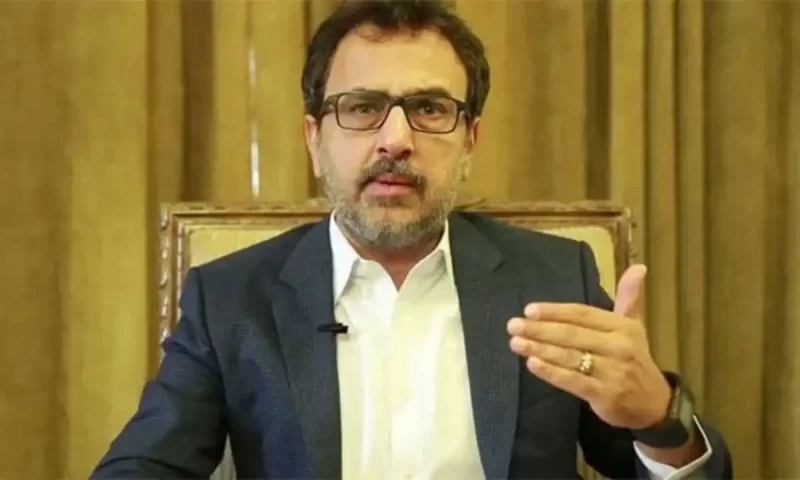Islamabad, April 05: The government has confirmed that there has been no reduction in the national base electricity tariff as of now.
However, Power Minister Awais Ahmad Khan Leghari stated that a Rs1.90 per unit quarterly tariff adjustment (QTA) would fluctuate based on changes in interest and exchange rates.
Additionally, a Rs1.71 per unit relief linked to the increased petroleum levy may continue into the next fiscal year.
At a press conference, Leghari clarified that all Independent Power Producers (IPPs) under the China-Pakistan Economic Corridor (CPEC) are protected under existing agreements, but discussions are underway to reprofile their debt and convert imported coal-based power plants to local coal.
He assured that any cost savings from these measures would eventually benefit consumers.
He emphasized that the International Monetary Fund (IMF) and other development partners would not have backed any tariff reductions if they were based solely on IPP renegotiations.
Instead, sustained engagements and a roadmap for power sector reforms helped build confidence in long-term tariff stability.
Breakdown of Relief Measures
During a separate hearing by the National Electric Power Regulatory Authority (Nepra), Power Division officials detailed the components of electricity cost relief for April to June:
-
Rs1.71 per unit relief in response to a Rs10/litre increase in petroleum levy.
-
Rs1.90 per unit negative QTA for the second quarter of FY2024-25.
-
Rs1.36 per unit negative monthly fuel cost adjustment (FCA), including:
-
46 paisa per unit applicable for April only.
-
90 paisa per unit applicable for April to June.
-
This results in a total benefit of Rs4.97 per unit. An additional Re1 per unit reduction is expected in the third quarter, bringing the total relief to Rs5.98 per unit.
When factoring in the impact on sales tax, an additional Rs1.42 per unit in relief brings the total announced reduction to Rs7.41 per unit, as confirmed by Secretary Power Dr. Fakhre Alam.
However, Leghari stated that the continuation of this relief hinges on immediate and effective reforms.
He reiterated that quarterly tariff adjustments (QTAs) will remain sensitive to interest and currency rate fluctuations.
For context, a Rs1 change in the exchange rate can lead to Rs8-10 billion in tariff implications, while a 1% change in interest rates could affect the tariff by Rs6 billion.
When asked why the base tariff—raised by Rs7.91 per unit in July 2023—has not been lowered despite improvements, Leghari responded that any changes to the base rate are pending review by the regulator and may occur in the next fiscal year.
IPP and GPP Renegotiations
The minister also revealed that the government had secured total savings of Rs3.696 trillion through renegotiations with 30 IPPs and revisions to contracts of six government-owned power plants (GPPs).
Of this, Rs2.661 trillion came from the GPPs, while Rs1.034 trillion was saved through IPP renegotiations. These included:
-
Rs297 billion in savings from five terminated IPP contracts.
-
Rs502 billion from 16 IPPs established under the 1994 and 2002 power policies.
-
Rs235 billion from nine bagasse-based IPPs.
Structural Reforms
Leghari highlighted that the upcoming Indicative Generation Capacity Expansion Plan (IGCEP) will ensure future power procurement is based on the least-cost principle through competitive bidding.
Even strategic power projects will be partly funded through the Public Sector Development Program (PSDP) or direct government support, preventing additional burden on consumers.
Additionally, the government plans to gradually eliminate the single-buyer model by empowering the Central Power Purchasing Agency (CPPA) to operate in a competitive electricity market.
Due to transmission line constraints, cheaper electricity generated from local coal in the southern region cannot currently be delivered to northern demand centers.
This issue, Leghari said, will be addressed through public-private partnerships, potentially reducing national tariffs by up to Rs2 per unit.
Circular Debt Management
The minister shared updates on the circular debt, which is projected to stand at Rs2.429 trillion for FY2024-25.
Although it was expected to increase by Rs300 billion, the actual figure fell by Rs9 billion during July–December, marking a Rs339 billion improvement.
Distribution companies (Discos) were expected to show inefficiencies totaling Rs303 billion but reported Rs158 billion, reflecting an improvement of Rs145 billion.
However, Discos in Hyderabad and Sukkur failed to meet performance targets due to governance issues, particularly the absence of independent boards of directors.
To support debt restructuring, the existing debt servicing surcharge of Rs3.23 per unit will remain in place.
This surcharge will help finance the restructuring of Rs1.2 trillion in circular debt, aiming to eliminate the entire Rs2.4 trillion circular debt over six years.
The remaining Rs300 billion in late payment surcharges will be addressed through improved Disco performance and financial measures by the Ministry of Finance.
Privatisation Roadmap
The minister outlined the government’s privatisation plan for Discos:
-
Phase One: Islamabad, Faisalabad, and Gujranwala Discos to be transferred to the private sector.
-
Phase Two: Lahore, Multan, and Hazara Discos will follow.
-
Long-Term Concessions: Hyderabad, Sukkur, and Peshawar Discos to be managed via long-term agreements.
-
Public Sector Improvements: Tribal and Quetta Discos will initially remain under government control, with eventual plans for private management.
Leghari emphasized that privatisation would be based on market interest and aims to bring efficiency and transparency to the power sector.
